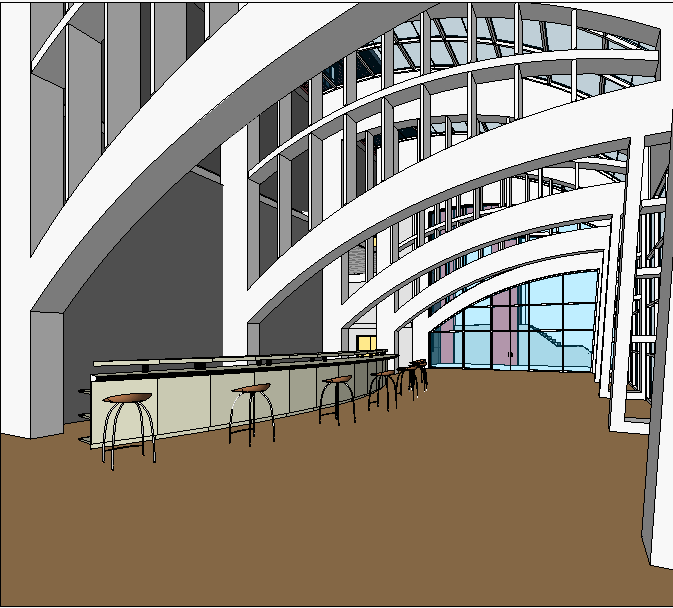Embark on a tantalizing journey through the enigmatic world of Revit City, where digital architecture and virtual landscapes collide!
If you’re a Revit user, you may have encountered occasional frustrations. The complexities of urban design and visualization can sometimes hinder your creativity.
Fear not! Revit City emerges as the savior, offering a virtual utopia where you can unleash your architectural prowess without limits.
Revit City is an immersive digital environment that seamlessly integrates with Autodesk Revit. It empowers designers to create and explore virtual cities with unparalleled detail and precision. From towering skyscrapers to intricate street networks, Revit City provides the perfect canvas to bring your urban dreams to life.

Source: www.youtube.com
## Revit City: A World of Digital Urbanization
As a Revit user, venturing into Revit City is akin to stepping into a limitless architectural playground. You’ll have the creative freedom to design, simulate, and optimize your urban visions like never before.
Revit City’s advanced tools allow you to experiment with various urban design parameters, from building heights and densities to transportation networks and green spaces. The ability to create and manipulate realistic 3D models in real-time empowers you to make informed decisions and produce stunning presentations.
## The Genesis of Revit City
The concept of Revit City was born from the need to address the limitations of traditional urban design methods. Architects and urban planners often faced challenges in visualizing and simulating complex urban environments.
Revit City emerged as a solution, providing a digital platform where the complexities of urban design could be explored and resolved in a virtual realm.

Source: www.youtube.com
## Unlocking the Secrets of Revit City
While Revit City has simplified urban design in many ways, it also boasts hidden features and techniques that can elevate your projects to new heights.
From optimizing building performance to generating realistic cityscapes, exploring the hidden depths of Revit City will unlock a world of possibilities for your architectural creations.
## Mastering Revit City
To truly harness the power of Revit City, it’s essential to master its tools and techniques. Whether you’re a seasoned Revit user or just starting your journey, there are countless resources and tutorials available to guide you.
By investing time in learning Revit City’s intricacies, you’ll gain the confidence to navigate this virtual urban realm and create awe-inspiring architectural masterpieces.

Source: www.youtube.com
Revit City: A Game-Changer for Urban Design
Revit City has revolutionized urban design by providing a powerful and versatile platform for architects and planners. Its ability to simulate and analyze complex urban environments in real-time sets it apart as a transformative tool for the future of architecture.
## Tips for Navigating Revit City
Navigating Revit City can be an overwhelming experience, especially for newcomers. Here are a few tips to help you make the most of this digital urban playground:
- Familiarize yourself with the Revit City interface and tools.
- Start with smaller projects to gain confidence.
- Utilize online resources and tutorials to enhance your knowledge.
- Join online communities and forums to connect with other Revit City users.
Revit City: A Gateway to Architectural Innovation
Revit City is not merely a software; it’s an enabler of architectural innovation. By embracing its capabilities, you’ll unlock new possibilities for urban design and create virtual cities that redefine the boundaries of architecture.

Source: bertylapple378.weebly.com
## Fun Facts about Revit City
Here’s a few intriguing facts about Revit City that might surprise you:
- Revit City is based on real-world urban data, making it an accurate representation of actual cities.
- You can create virtual cities inspired by famous metropolises or design entirely new urban landscapes from scratch.
- Revit City has been used in major urban planning projects around the world, including the design of new cities in China and the Middle East.
## How to Create a City in Revit City
Creating a city in Revit City is a rewarding experience that allows you to unleash your creativity and build your own virtual metropolis.
Follow these steps to get started:
1. Start by defining the boundaries of your city and creating a basic layout.
2. Add buildings, roads, and other urban elements.
3. Use Revit City’s tools to simulate and analyze your city’s performance.
4. Refine and optimize your design based on the simulation results.

Source: www.youtube.com
## What If Scenarios with Revit City
Revit City empowers you to explore “what if” scenarios and test different design options before making any real-world commitments.
Here are a few examples:
- What if I increase the height of this building? How will it affect the surrounding neighborhood?
- What if I add a new park to this area? How will it impact traffic flow?
- What if I change the orientation of these streets? How will it improve pedestrian safety?
## A Listicle of Revit City Features
Here’s a brief listicle highlighting some of the key features that make Revit City an indispensable tool for urban designers:
- Realistic 3D modeling
- Urban simulation and analysis
- GIS integration
- Collaboration tools
- Virtual reality support

Source: www.youtube.com
## Question and Answer: Revit City
A: Revit City enables architects and planners to create, simulate, and optimize virtual cities, making urban design more efficient and innovative.
A: Revit City has a user-friendly interface and numerous resources available to help users get started.
A: Yes, Revit City seamlessly integrates with Autodesk Revit and other BIM software.
A: Revit City is constantly evolving, with new features and capabilities being added to further enhance the user experience.
## Conclusion of Revit City
Revit City stands as a groundbreaking platform that empowers architects and urban planners to design, analyze, and optimize virtual cities with unprecedented detail and precision. Its ability to create realistic and immersive urban environments makes it an invaluable tool for the future of urban design